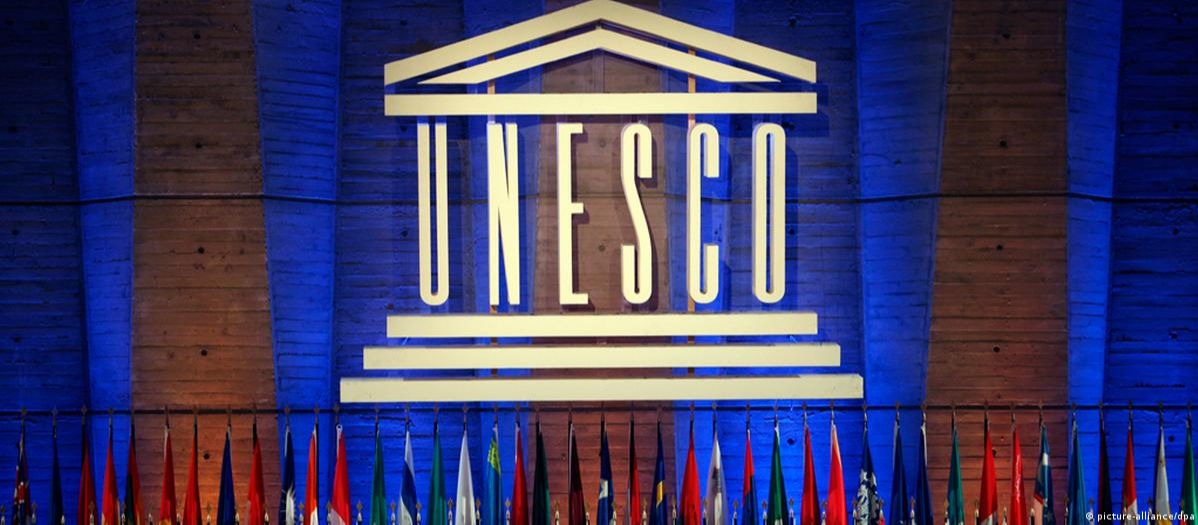Washington plans to rejoin the United Nations Educational, Scientific and Cultural Organization (UNESCO) five years after ex-president Donald Trump quit the agency in a new bid to counter China’s growing clout.
Washington privately contacted UNESCO last week to declare its decision to rejoin the international agency, US media outlets reported Sunday citing a State Department spokesperson, pointing out that the move is intended to counter China’s climbing influence in the organization.
According to the reports, U.S. Under Secretary of State for Management John Bass had stated earlier this year that the Biden administration believed that rejoining UNESCO would help Washington’s global rivalry with China, which has invested large sums of efforts into the UN organization to advance “innovative development” using digital technologies as part of its Belt and Road Initiative.
The move will “help us address a key opportunity cost that our absence is creating in our global competition with China,” Bass reportedly added. “If we’re really serious about the digital-age competition with China, from my perspective, in a clear-eyed set of interests, we can’t afford to be absent any longer from one of the key fora in which standards around education for science and technology are set.”
“And there are a number of other examples in that space of UNESCO’s mission where our absence is noticed and where it undercuts our ability to be as effective in promoting our vision of a free world,” he further claimed.
U.S. Secretary of State Antony Blinken also expressed concerns last April that the United States has been harmed by its absence at UNESCO, pointing to its role in “education” and the emerging field of artificial intelligence. “When we’re not at the table shaping that conversation and so actually helping to shape those norms and standards, well, someone else is, and that someone else is probably China,” Blinken noted.
Washington owes UNESCO a hefty amount of money in back dues and is expected to pay hundreds of millions of dollars if it wants to run for a seat on the organization’s executive board in next November’s vote, as it seeks to counter China’s influence.
The US has racked up about $500 million in unpaid dues to UNESCO, which it will have to pay to resume full membership rights. Congress approved the sum in December, as the administration of U.S. President Joe Biden has made it a priority to rejoin “to counter what it sees as the growing influence of the Chinese government on the UN agency’s agenda,” according to US-based press reports.
U.S. media further reU.S. plans to rejoin UNESCO in bid to counter China’s influenceported that the country’s Deputy Secretary of State for Management Richard Verma delivered a letter to UNESCO Director-General Audrey Azoulay on June 8, with a proposed plan to rejoin the organization, readmission to the agency’s executive board, and a timeframe for paying back dues.
Azoulay’s office sent a letter on Friday to the ambassadors of all 193 member states calling for a meeting scheduled for Monday, during which she “will provide urgent strategic information,” US press reports added, noting that Azoulay further called for a special general conference meeting in July to approve the US’s rejoining plan.
The U.S. previously withdrew from UNESCO under the Reagan administration in 1984 because it viewed the agency as “mismanaged and corrupt.” The United States rejoined in 2003, before leaving again under Trump.
Trump’s U.S. withdrawal from UNESCO, which went into effect in late 2018, came seven years after the Obama administration suspended funding to UNESCO after Palestinians were admitted as a member while claiming that the agency promoted “anti-Israeli policy.”
Washington has persistently tried to block and challenge cultural efforts by other UNESCO members based on its own world-view and self-serving interests. It has also used its influence to represent and defend the openly racist policies of the Zionist regime occupying Palestine.
Meanwhile, Chinese officials oversaw the digitalization of a huge swathe of the murals in Mogao Caves, also known as the Thousand Buddha Grottoes or Caves of the Thousand Buddhas, 25 kilometers southeast of the center of Dunhuang, an oasis located at a religious and cultural crossroads on the Silk Road, in Gansu province, China. Some 26,000 square meters of the murals in Mogao Grottoes, or half of the total, have been digitalized, according to the Dunhuang Academy in northwest China’s Gansu Province.


